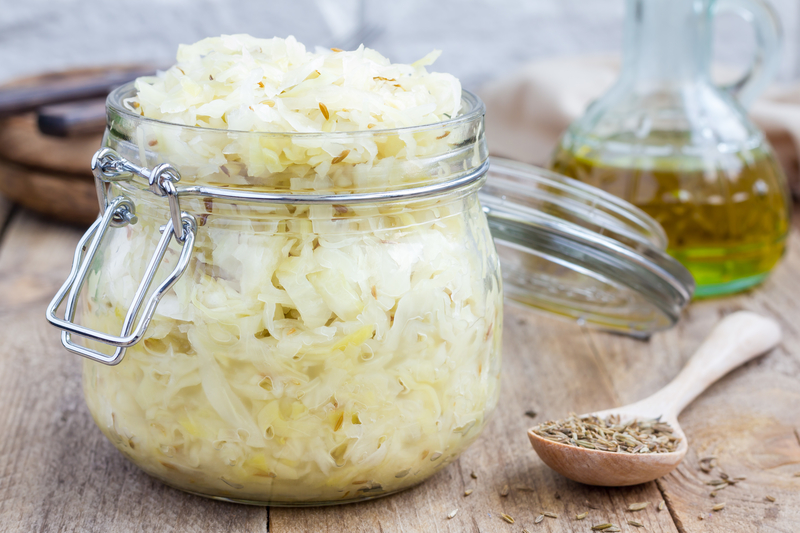Homesteading takes a large amount of planning, organizing and using every skill that you have. Sometimes it means making sacrifices and only eating the food you have. However, this food preservation may just change all of that. You might be blown away by how well it works!
The Food Preservation Everyone Should Use On The Homestead Is:
Lacto-fermentation, or fermentation with lactic acid-producing bacteria.
The Steps To Follow For Yogurt And Sauerkraut Are:
Homemade Yogurt
Start with a freshly sterilized jar, boiled for 10 minutes or put through a sanitize cycle on your dishwasher. Bring milk to 180 degrees (Fahrenheit) on stovetop to sterilize it, pour it into your clean sterile jar. Wait until it cools down to 90-100 degrees, add a few heaping spoonfuls of fresh newly opened yogurt, or a clean uncontaminated container from your last batch. Wrap jar in towel or place it in warm water bath to keep it warm for 8-12 hours while culture incubates. Be careful not to let the mixture go above 115 degrees, as it may kill off your starter culture. After 8-12 hours, you should have a thick tangy yogurt, place in fridge.
Homemade SauerkrautFinely chop cabbage, pack into clean sterile jar. Cover with brine made by dissolving 1 1/2 tablespoons of salt into each quart of water. Alternatively, mix chopped cabbage with 3 tablespoons of salt for every 5 pounds of cabbage, allow salt to draw liquid out of cabbage to create its own brine. Top off with a 1 1/2 tablespoon to 1 quart of water-salt brine if water level does not completely cover cabbage.
Make sure that cabbage stays well below water level, as any cabbage exposed to the air will likely spoil batch. Use something clean, non-porous and non-reactive as a top weight to keep cabbage below water line. Try small plate, smaller jar or sealed plastic bag filled with water. Avoid anything made of metal, as it may react with ferment.
Allow sauerkraut to sit on counter, ideally between 70-75 degrees and out of direct sunlight for 3-4 weeks. At that point, it can be placed into refrigerator to slow ferment, or kept on counter for another week or two while it’s consumed. Fully fermented sauerkraut should keep in refrigerator for several months if kept uncontaminated.
Enjoy!
As you can see, it isn't that hard at all to preserve yogurt and sauerkraut. Once you learn how to preserve these foods, you can work up to preserving just about anything using this method. This way you can keep eating all the foods that you love and make sure your homestead continues to thrive. Have you tried to this preservation method before?
Let Us Know What You Thought!
To find out more about this preservation method, please go to:
